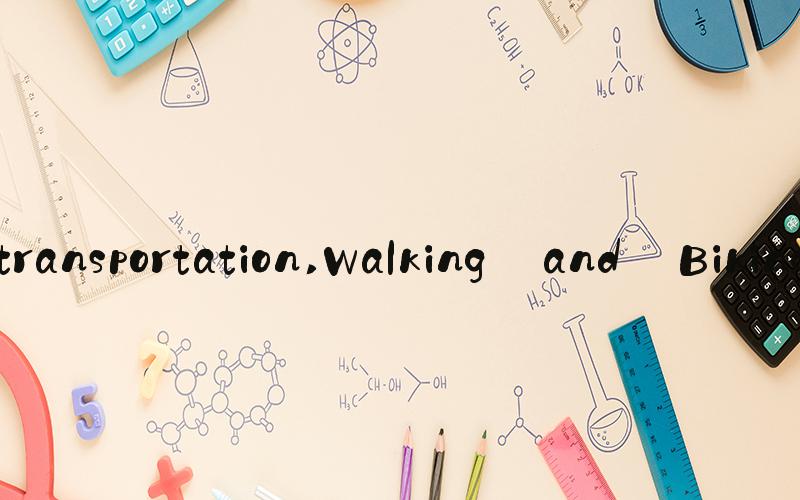AI答案
 Getting around: A Guide to Transportation
Getting around: A Guide to TransportationTransportation is an essential part of our daily lives. Whether you are commuting to work or running errands, we all rely on various modes of transportation to get us from point A to point B. In this guide, we will explore the different types of transportation available and the pros and cons of each.
Walking and BikingWalking and biking are two of the most environmentally friendly and healthy ways to get around. They are also very inexpensive and can save you money on gas and public transportation fares. Additionally, walking and biking can help reduce traffic congestion and air pollution. However, these modes of transportation may not be feasible for everyone, particularly those who live in areas with limited bike lanes or unsafe walking conditions.
Public TransportationPublic transportation, such as buses, trains, and subways, is a convenient and affordable way to get around. It is particularly useful for those who live in larger cities where driving and parking can be a challenge. Public transportation also helps reduce traffic congestion and air pollution. However, it can be crowded and delays are common. Additionally, public transportation may not be available in all areas, making it difficult for some people to use as their primary mode of transportation.
Taxis and Ride-Sharing ServicesTaxis and ride-sharing services, such as Uber and Lyft, have become increasingly popular in recent years. They provide a convenient and efficient way to get around, particularly for those who need to travel longer distances or who are in a hurry. Ride-sharing services also offer an opportunity for individuals to earn extra income by becoming drivers. However, taxis and ride-sharing services can be expensive, particularly during peak hours or when surge pricing is in effect. Additionally, the safety and reliability of these services have come under scrutiny in recent years.
DrivingDriving is perhaps the most convenient and flexible way to get around. It allows you to go where you want, when you want, without having to rely on schedules or other people. Additionally, cars provide a sense of privacy and comfort that other modes of transportation may not offer. However, driving can be expensive, particularly if you own a car. Gas, maintenance, and insurance costs can add up quickly. Additionally, driving can contribute to traffic congestion and air pollution.
CarpoolingCarpooling is a great way to save money and reduce your carbon footprint. By sharing a ride with others who are going in the same direction, you can cut down on gas and other transportation expenses. Carpooling also helps reduce traffic congestion and air pollution. Additionally, carpooling allows you to socialize and network with others who may share similar interests or professions. However, carpooling can be inconvenient if schedules do not align and can be difficult to coordinate with multiple people.
ConclusionIn conclusion, transportation is an essential part of our daily lives and there are many different options available. Each mode of transportation has its own pros and cons, and the best choice will depend on your individual needs and circumstances. By considering the environmental impact, cost, convenience, and safety of each option, you can make an informed decision about which mode of transportation is right for you.
